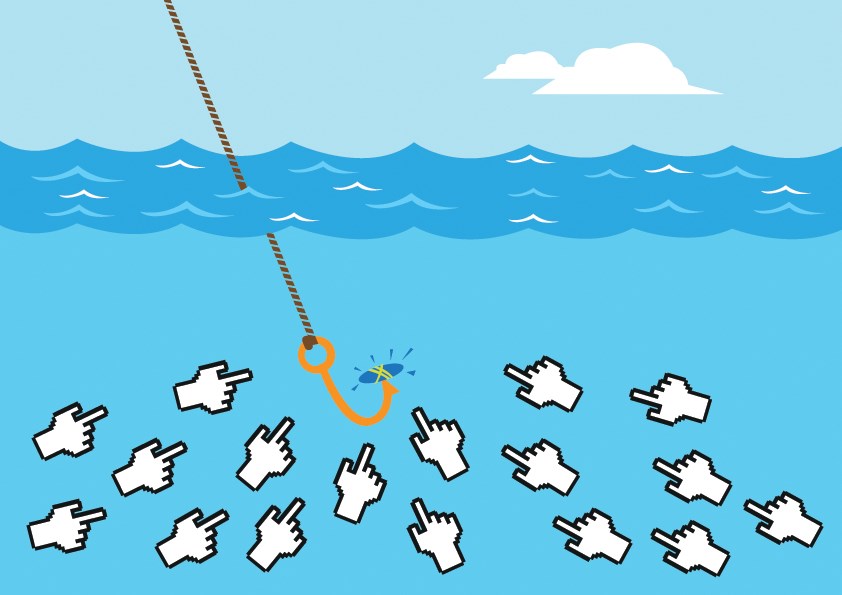Just to be upfront right away, I actually don’t have a “top 10 list” of how clickbait works. This column will, however, cover the topic, why we continually fall for it, and how you can teach yourself and your kids to be a bit more online media-savvy.
I’m not really sure what will happen to your jaw, though.
Clickbait, for those who need a quick refresher, is a negative term (most of the time) for web content that’s goal is to get users to click on a link to go to a certain webpage. Typically, clickbait uses headlines like the one at the top of this page. It uses either strong emotional arousal or an “information gap” to manipulate readers into clicking through to find out more. What’s funny is most of the time we are well aware that manipulating language is being used on us, but we are nonetheless helpless to resist it.
We’re all guilty of clicking on those headlines that promise “What [insert name of famous starlet] looks like now will take your breath away!” or “The REAL reason for Trump’s immigration policy, and why he’s trying to keep it secret from the world!”
The funny thing is, clickbait isn’t a product of the internet age at all. It’s been around for decades. A newspaper ad attributed to copywriter John Caples in 1927 that read: “They Laughed When I Sat Down At The Piano, But When I Started To Play…!” Sound familiar? It’s the language of every piece of clickbait out there on the web, today. It tells a story, and leaves just enough information out to compel people’s curiosity. What happens when he plays the piano? For gosh sakes, I need to freakin’ find out! And people in droves sent in their information to find out. Today, clickbait more often than naught is all about getting somebody to a webpage so they can be served ads. Yeah, it sometimes even isn’t about the veracity of the content, it’s about generating income from a high number of clicks.
That is precisely why clickbait has become such a hot topic lately. Because clickbait works best with a strong provocative message, it often preys on preconceived notions or opinions, feeding us what we want to believe, over the actual facts. Enter the age of “fake news” propelled by the psychological science of clickbait. It’s become so prevalent and, in fact, dangerously manipulative (remember clickbait/fake news supposedly manufactured in Russia was aimed at undermining and influencing the US elections in 2016) that Google, Facebook and other online sites are actively trying to crack down on publishers of these sorts of misleading or false content.
But, how can the average person weed out what’s real media/content using tried-and-true clickbait tactics to get readers, and those just trying to get your clicks for ad revenue/influence your opinion with false news/infect your computer with malicious code through their site? Well, just ask yourself a few basic questions:
Who made this?
Who is the target audience?
Who paid for this? Or, who gets paid if you click on this?
Who might benefit or be harmed by this message?
What is left out of this message that might be important?
Is this credible (and what makes you think that)?
Another important step in critically examining the type of media and content you are consuming is to check multiple sources, and consider whether mainstream sources are covering the same thing, or not, and why.
Look, there is nothing wrong really with clickbait. It’s been given a bit of a bad rap over the last few years, but some of it can be quite entertaining (and true). Just be aware of it — and don’t get played.




